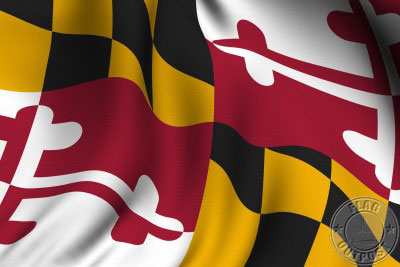Maryland became more diverse over the last decade and the number of residents who identify as white alone dropped below half the state’s population, reflecting a nationwide trend, according to U.S. Census bureau data released Thursday afternoon.
The state’s overall population increased 7% since 2010, up to 6,177,224 residents in 2020. It is the first time the state’s population has topped more than 6 million residents in a decennial Census.
Montgomery County accounts for about one-sixth of the state population, and became the first jurisdiction in state history to register more than 1 million residents in the Census.
The data released Thursday also confirmed continued population loss in the city of Baltimore. In 1950, the city had just under a million residents — 949,708 — but that figure has been sliding ever since.
There were 585,708 Baltimoreans counted in the 2020 Census.
Here are four takeaways from the data:
Less than half of Marylanders identified as white
Less than half of Maryland’s population now identifies as white alone, according to Census data. The state saw a 10.5% decrease in the number of people who identify as white alone between 2010 and 2020, according to Census data, and that figure now stands at 48.7%.
Every county in the state saw decreases in the number of people identifying as white alone over the past decade.
The percentage of the population identifying as Hispanic or Latino increased from 8.2% in 2010 to 11.8% in 2020.
The percentage of Marylanders identifying as Asian alone increased from 5.5% in 2010 to 6.8% in 2020, and the percentage that identifies as Black or African American alone increased slightly from 29.4% in 2010 to 29.5% in 2020, according to the data.
Those figures reflect increasing diversity across the United States, according to Census data. The percentage of Americans identifying as white alone fell 8.6% nationwide between 2010 and 2020.
Garrett County had the largest white population in Maryland — 95.5% of county residents — while Prince George’s County had the smallest — 12.9%. The percentage of Prince George’s County residents who identify as white alone fell by nearly 25% over the last decade; the county ranks 11th nationwide for its percentage of non-white population, according to the Census Bureau.
Baltimore’s population dropped below 600,000 for the first time in a century
While Baltimore County grew between 2010 and 2020, the city of Baltimore saw yet another decline in population during the last decade.
The city had a population of 585,708 as of the 2020 Census compared with 620,961 in 2010, a 5.7% decrease. The 1910 Census was the last time Baltimore’s population was under 600,000. Baltimore’s population has been in decline since it topped out at 949,708 in 1950, according to the city’s planning department.
In a Thursday news release, Baltimore Mayor Brandon M. Scott (D) said he plans to launch a growth plan for 2030 aimed at improving quality of life in the city.
“Today’s population figures are the culmination of more than 70 years of population decline, showing why we must pivot from the status quo towards inclusive economic policies that improve the lives of our legacy residents, while attracting new residents,” Scott said in a release. “Understanding that much of Baltimore’s 21st century population loss has been driven by an exodus of African American households, my administration will be focused on equitable economic development. We can no longer leave any corner of our city behind.”
Baltimore’s 5.7% population percentage drop wasn’t the most dramatic in the state: Allegany County lost 9.3% of its population between 2010 and 2020, dropping from 75,087 to 68,106.
Somerset County saw a 7% decrease, with its population decreasing from 26,470 to 24,620.
Kent County, Maryland’s smallest by population, saw a 4.9% decrease, dipping below 20,000 to 19,198.
Dorchester, Garrett and Talbot counties also saw population decreases.
Montgomery County tops 1 million residents; Frederick, Howard and Charles saw massive growth
Montgomery County became the first Maryland jurisdiction in history with a population topping 1 million in a decennial census. The county’s official population grew 9.3% in the last decade and now stands at 1,062,061.
Montgomery’s population has more than doubled since the 1970 Census, when there were 522,809 residents.
Frederick County was home to the fastest growth in Maryland, with its population increasing by 16.4% between 2010 and 2020.
Howard County saw a 15.8% increase in its population, and Charles County saw a 13.7% increase.
In all, seven of Maryland’s “Big Eight” counties saw population growth over the past decade.
Prince George’s County’s population grew by 12%; Anne Arundel County saw a 9.4% increase and now has a higher population than Baltimore City at 588,261; Harford County saw a 6.6% increase; and Baltimore County’s population increased by 6.1%.
Southern Maryland’s growth wasn’t confined to Charles County: St. Mary’s County saw a population increase of 8.2% and Calvert County’s population increased by 4.6%.
What does this data mean for redistricting?
The raw, untabulated data released by Census officials Thursday will be used by lawmakers and redistricting commissions across the country for mapmaking — but it will need some adjustments before it’s ready to be used in Maryland’s redistricting process.
Maryland Department of Planning officials will need several weeks to adjust the data to comply with Maryland law and move currently incarcerated people back to their last known address. Once that adjustment is finished, that data will be used by Maryland’s dueling redistricting commissions to draw up proposed congressional and legislative maps.
By Bennett Leckrone, Danielle E. Gaines, and William F. Zorzi.



Write a Letter to the Editor on this Article
We encourage readers to offer their point of view on this article by submitting the following form. Editing is sometimes necessary and is done at the discretion of the editorial staff.